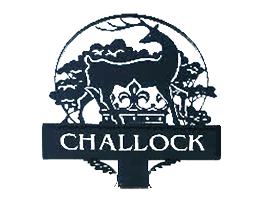After his conquest of England in 1066, Duke William of Normandy was crowned King of England and rewarded his favourites with land and rights taken from the English nobility. One such holding, the Manor of Wye, which included the most southerly part of the parish of Challock, was awarded to the Abbot of the Church of St Martin of Battle. He allowed Challock the right to hold an annual fair to be held on 27th September, this being the saint’s day of Saint Cosmas and Damian to whom the church at Challock was dedicated.
In 1312 reference to the Challock Fair taking place can be found when the then Abbot of Battle was challenged by King Edward II to confirm his ownership of the Manor of Wye, and the fair at Challock. The Abbott stated that “from time out of mind he and his predecessors had, without interruption, held the manor and the fair granted by King William”, and this was confirmed by jury.
It would appear that this early Challock fair was most probably held on land in Wye hundred somewhere between the south of Challock churchyard and the southernmost parish boundary which is to the north of The Pilgrim’s Way, in what is now Eastwell Park. It is unclear when the fair moved to its present site on Challock Lees but this may have coincided with the creation of Eastwell Park in the 16th century which caused the road from Ashford to Faversham to be re-routed thus bypassing the existing village and the Church. The village was then forced to move a mile to the north to Challock Lees, leaving the Church isolated at the bottom of the hill. But the fair survived and is referred to in Hasted as “a great fair for the sale of cattle and allsorts”, and Owen’s Book of Fairs 1783 confirms the sale of horses, cattle and pedlary at Challock fair.
In 1935 in a Kent Messenger report reflecting on 19th century village life in Challock, Miss Tamsitt a village resident since her birth in 1860 describes the annual fair as “a great event at Challock and probably the biggest fair in Kent. All day long the horses raced and were trotted up and down on the Lees with their tails and manes all braided up with coloured ribbons. In the evening all the villagers turned out to enjoy the roundabouts and side shows”. She does mention, however, that the fair was discontinued as the showmen used to get quarrelsome!
The Vestry minutes for Challock Church confirm that the Challock fair was indeed abolished after the then Home Secretary introduced ‘The Fairs Act’ to Parliament on 25th May 1871. This effectively abolished many of the fairs in the country, including the one in Challock, saying… “they are unnecessary, are the cause of grievous immorality and are very injurious to the towns in which such fairs are held”. The last Challock fair of the 19th century was held on 8th October 1872, temporarily halting a practice that had continued from the time of the Norman Conquest!
In the mid 1980’s, a small group of enterprising and dedicated Challock villagers decided to revive the fair, with a new name, ‘Challock Goose Fair’, to raise money for village causes and in particular for a new village hall. In 1995 Challock Memorial Hall was completed and today the funds raised from the Goose Fair are distributed by The Challock Village Fund Trustees to help support Challock village clubs and societies, the village churches, the village school and the Challock community in general eg the biennial Firework Display held on Challock Lees.
With thanks to Freda Cantle 2009
